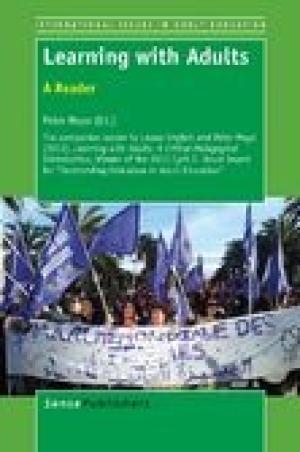Resources by Kyle J. A. Small

As the director of the Doctor of Ministry degree program at my school, I quickly grabbed The Handbook for Advising Graduate Students in hopes that it would serve as a companion for advisors in the program. Perusing the table of contents continued this hope. Many advisors of graduate students follow the axiom of teaching: we advise as we were advised. Advisors generally lack the time to reflect on and improve our practices of advising above or beyond what we ourselves received. Additionally, program directors rarely take the necessary time to invest in the pool of graduate advisors for the sake of our students. The Handbook for Advising Graduate Students attempts to invite reflective practice toward improving the graduate student experience. The book is a primer on the intention and attention necessary for the advising relationship. The table of contents alone is instructive for advisors to remember what matters in advising; the order moves from defining the relationship, to student-centered practices, to boundaries and sticky situations, to career support, and finally to developing a culture for student-centered advising. Part one covers the basics of the student-advisor relationship, namely offering different models for advising. Bruce Shore names three dominant models for how advisors or students select one another: pedigree (specialist relationship), patronage (for research funding), or kindred spirit (interpersonal connection) (10-11). Regardless of which of these models an advisor chooses, Shore argues it must be tied to the student’s interest and the advisor’s strengths. Chapter two takes up practices for student-centered advising. Shore makes clear that student-centered advising is not coddling or enabling; it is empowerment. He writes, “The most valuable thing an advisor can do with a graduate student is to welcome and empower her or him from the first encounter into the shared process of creating knowledge, conceptualizing grant applications, preparing conference presentations, writing for publication, helping with editing and so on” (22). Advising is mentoring for the academic vocation and encouragement toward career fulfillment. Shore emphasizes that time counts, especially time spent in providing feedback and being accessible (37). Advisors need to develop the skills that increase advisor accessibility and student empowerment. Shore proposes this work as an interrogative skill known as scaffolding. Scaffolding makes the student an active participant in the graduate school process and locates the advisor as the interrogator toward student progress. The advisor’s role is to regularly ask, “Where are you now? What is the next step? What can I do to help you get to that next step?” (41). This last question is an evaluative step that takes time and presence, yet also solidifies the relationship toward its necessary end – degree completion and employability. The book concludes with a chapter for degree program advisors. Advisor development or enrichment is key in developing a culture of student-centered advising. Just as the scaffolding process works for students, deans and program directors can use the scaffolding questions to assist advisors. Appendix 3 provides a checklist for assessing advisors according to student-centered practices. The Handbook for Advising Graduate Students is an important idea and assists program directors and advisors in recognizing the content and process of the advising relationship. The book raises important issues in advising graduate students, but is limited in its ability to coach advisors in the work. Shore offers several helpful tricks from his own work in advising, yet because his experiences is the only perspective included, the book lacks the best practices of advising that could come from a broader work engaging multiple types of advisors from multiple kinds of institutions. Shore’s volume gives reason to write a second book on advising graduate students. Advisors and program directors need a volume that gathers best practices from graduate student advisors and that also includes the voices of students. I would recommend that such a volume adopt a success case methodology that begins with asking recent PhD and professional program graduates about their experiences with advisors. A volume that gathers student stories and advisors’ self-understanding would be helpful in developing advisor training and enrichment exercises for doctoral and professional degree programs.

Learning with Adults begins with the following assumption: adult learning is central to the flourishing of a democracy, a democratic world, and practices of justice and peace. The volume borrows the foundations of Paulo Freire, Jürgen Habermas, John Dewey, Theodor Adorno, Jack Mezirow, and other critical theorists and democratically-minded educators and philosophers to develop a substantial discourse around adult learning. This volume is a companion to the original, Learning with Adults: A Critical Pedagogical Introduction (2012, Sense Publications) and is volume 13 in a series committed to the expanding field of adult learning centered in emancipatory, democratic, and critical studies. This second volume developed as a multi-authored extension of the initial volume. The authors of the initial volume understood that more work needed to be completed around adult learning as it relates to sexual orientation, disability, literacy, and consumer rights. The authors extended this initial plan to include chapters on relating adult education to poverty, libraries as learning sites, social creation, aesthetics, and media. Unlike traditional reader-companion volumes, this reader does not provide the foundational texts for the initial volume but provides amplifying essays brought together by contemporary authorities in adult learning and outside scholars, including Zygmunt Bauman. This is an interesting collection as it lays out essays toward an emancipatory vision for adult learning and away from the consumerist or compliance categories of training and education. The volume has five parts, beginning with the learning society and moving through questions of identity, instruments of practice, and learning in everyday life. The final section is on policy and context, which connects to an important literature on citizenship education for adult learners. The volume makes a contribution to the definition and scope of adult learning. In sum, adult learning, throughout the volume, is best understood from Oscar Negt. In his essay, “Adult Education and European identity,” he says adult learning is “learning processes that are determined by people’s own interests and horizons of perception, so that general relationships are made comprehensible” (126). The assumption throughout the volume is that adult learning is dynamic and that the methods, processes, and outcomes constantly shift as people’s own interests and horizons of perceptions shift. D.W. Livingstone outlines how adult learning that is emancipatory extends the scope of education and reverses the trend that “we may becoming increasingly willfully ignorant societies rather than learning ones” (33). Each of the chapters offers models for adult learning, some better than others, to increase critical thinking and to challenge societal norms. Several of the essays highlight the social inequality evident in access to formal education and claim that social and economic class status continue to be roadblocks in granting access to transformational learning. Adult learning, for these authors, is an invitational practice for all people and is, in itself, emancipatory. The authors continually highlight how the history of education (à la Meyers [1960] and Smith [1955]) is in need of ongoing critique if education, specifically adult education, is going to move beyond compliance and consumerist practices. These essays press against dominant ideologies, namely that “the dominant tendency in contemporary thought has been to equate learning with the provision of learning opportunities in settings organized by institutional authorities and led by teachers approved by these authorities” (37). Adult education has rarely moved beyond this dominant trend and has mostly accentuated it, which limits transformative learning for marginalized adult communities. The essays engage in a clear critique while also offering models for emancipatory and transformational adult learning processes (see Livingston’s and Cranton’s chapters). These models are the take away gifts from the volume. The models fall into three categories. The first set of models are site-based learning models, where the locations of everyday life are taken up as locations for learning. The second set of models arise from within the institutionalized practices of societies, where social and economic practices invite critical questions and transformative learning opportunities; and the third model is rooted in the ideologies of good education, namely processes to enact justice and peace. Overall, the volume holds education for adults as a learning paradigm for its own consideration. The site-based learning discussion recognizes that learning spaces are most often beyond the classroom and are found in the student’s everyday experiences. However, adult education that occurs in a classroom then becomes, itself, a site of the everyday experience. Additionally, this volume is a model for how the liberal arts tradition is a common practice in adult learning, whereby multiple disciplines make intersections around a common question. There is broad range of voices from education, philosophy, economics, sociology, and elsewhere included, yet all are committed to common questions of lifelong adult learning. Finally, the volume in itself is an adult learning model; the renaissance feel to the book results in unexpected points of informational learning for the reader. For example, on the topic of capitalism’s impact on the labor force and access to education, D.W. Lingston highlights that in 1983 only 28 percent of workers needed a college degree; by 2004 this figure rose to 45 percent. What is important is that over this same time period, degree attainment increased from 22 percent (of the population) to 54 percent, which is an increase of 34 percent (46). The data assists the reader in understanding how formalized processes of education result in trends toward underemployment. The point of information locates the implications of economics on the practice and process of adult learning. The volume, however, falls short of expectations. I was expecting the inclusion of several foundational texts in relationship to the field of adult learning. Also, several of the essays trail away from the central argument around learning with adults into diatribes on the respective intellectual agendas of each author; this is both a gift and burden. Each of the diatribes is not unimportant yet limits the volume’s coherence toward detailing models and processes for adult education amidst diverse populations. The positive aspect of this is mentioned above. I recommend this volume to curious readers. Learning with Adults assists its readers in understanding the complexities of learning with adults and makes clear that the field of adult learning is underdeveloped and misunderstood when connected to the traditional avenues of education. If a reader is looking for a more basic and invitational text on the topic of adult learning, I recommend purchasing the first volume in this series (English and Mayo, Learning With Adults: A Critical Pedagogical Introduction, 2012).

Kyle J. A. Small, Ph.D. Associate Academic Dean and Associate Professor for Church Leadership Western Theological Seminary The faculty at Western Theological Seminary (WTS) in Holland, MI recently invested itself in Willie James Jennings’ book, The Christian Imagination: Theology and the Origins of Race (Yale University Press, 2010). Three faculty members were invited to take up Jennings' claim and call, and to generate a conversation in terms of how Jennings’ work intersects with our shared task of teaching and learning. I engaged as a pastoral theologian wondering what are the pedagogical implications if we accept Jennings' book, on his own...